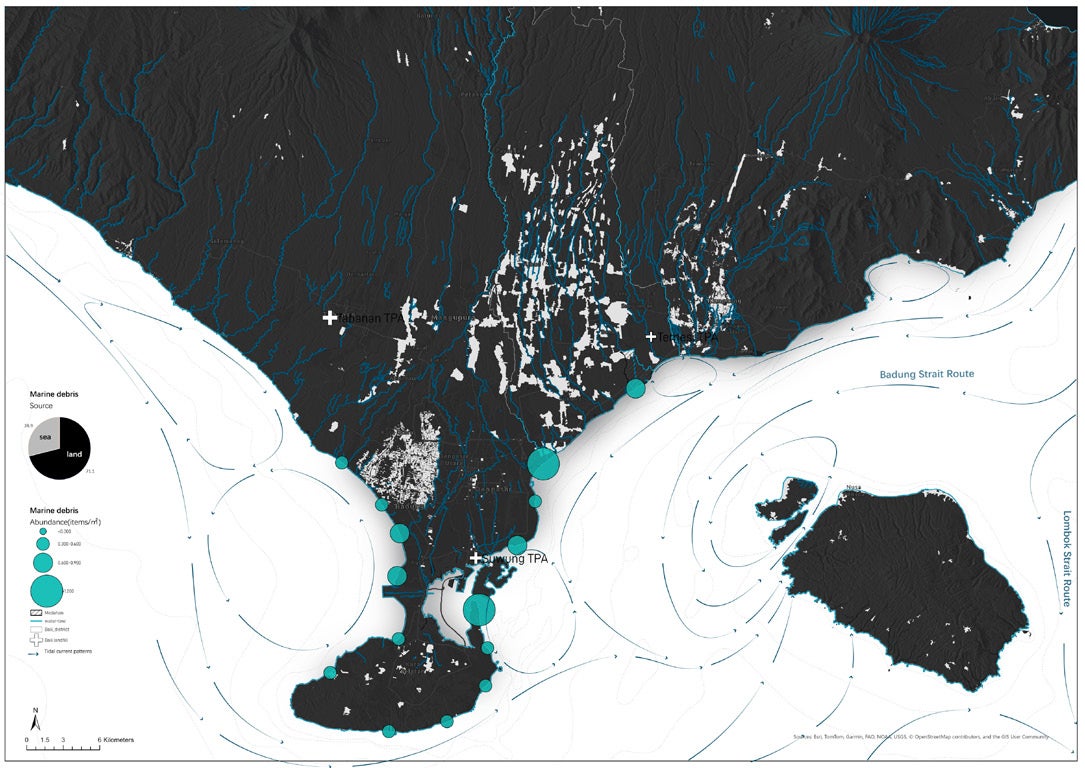Marine Debris_ Natural Trash

Indonesia is currently the country that produces the second-most marine debris. An estimated 1.29 million tons of marine litter are produced in Indonesia each year. For Bali, especially in its southern region, it has been plagued by the problem of marine litter, which has had a negative impact on Bali’s tourism industry. Even though a lot of advanced technologies and facilities, such as THE OCEAN CLEAN, have been developed to help people clean up marine debris, the high cost prevents them from being widely used. The goal is to establish a naturally occurring marine debris trap using the currently vacant beach. It lessens the amount of waste that enters the ocean from the land on the one hand. Nevertheless, it is also capable of removing trash from the ocean and stopping it from endangering the marine ecosystem.

The Southern Bali Marine Debris
For Bali, especially in its southern region, it has been plagued by the problem of marine litter, which has had a negative impact on Bali’s tourism industry. The accumulation of beach garbage stems from three main factors:Flat terrain and river flow in Bali’s southern region lead to land-generated waste flowing into the sea due to inadequate waste management. Vibrant tourist attractions and festivals like the Biaung Kite Festival along the beach contribute to garbage buildup. Natural tidal movements wash ocean-floating garbage onto the shore.
Source and Destination
The survey reveals that 71.1% of marine litter originates from land sources, while 28.9% is derived from the ocean itself. Currently, nearly half of the Marine Debris (MD) is disposed of in the environment, with only a mere 4% being reused.
Plastic constitutes the majority of the debris, accounting for 87.31% during the rainy season, followed by wood or paper at approximately 6.83%.

Master Plan
In the intertidal zone, ponds and islands have formed into natural catch-alls that allow Marine Debris (MD) to build up. River mouth artificial traps will efficiently cut down on land-based waste, and community members will transport the sorted and recycled waste to adjacent workshops for processing, creating jobs in the process.
Strategy
The main goal of this project is to utilize the existing vacant beach to create natural traps. to change the distribution of trash on the beach while trapping trash in the ocean.

Trash Flow
Trash gathered from both man-made and natural traps would just need to be cleaned and sorted on the beach, dried, and then brought to the nearby workshop to be turned into useful materials. The neighborhood will be enticed to participate in the recycling and disposal of marine litter in order to profit from it.
Natural Traps
The flow to the beach is slowed by the island + bond trap between intertidal zones (-1.2-1.2 m), which permits the MD to gather in particular places. This has the potential to alter not just the linear distribution pattern of waste but also the operational conditions that allow individuals to gather and utilize marine waste.

Nearby Workshop
Utilize and enlarge the abandoned coffee shops on the shore to construct a comprehensive waste treatment facility. It lowers the cost of waste transportation and raises the economic value of products by enabling individuals to pretreat and process the collected waste using basic tools.